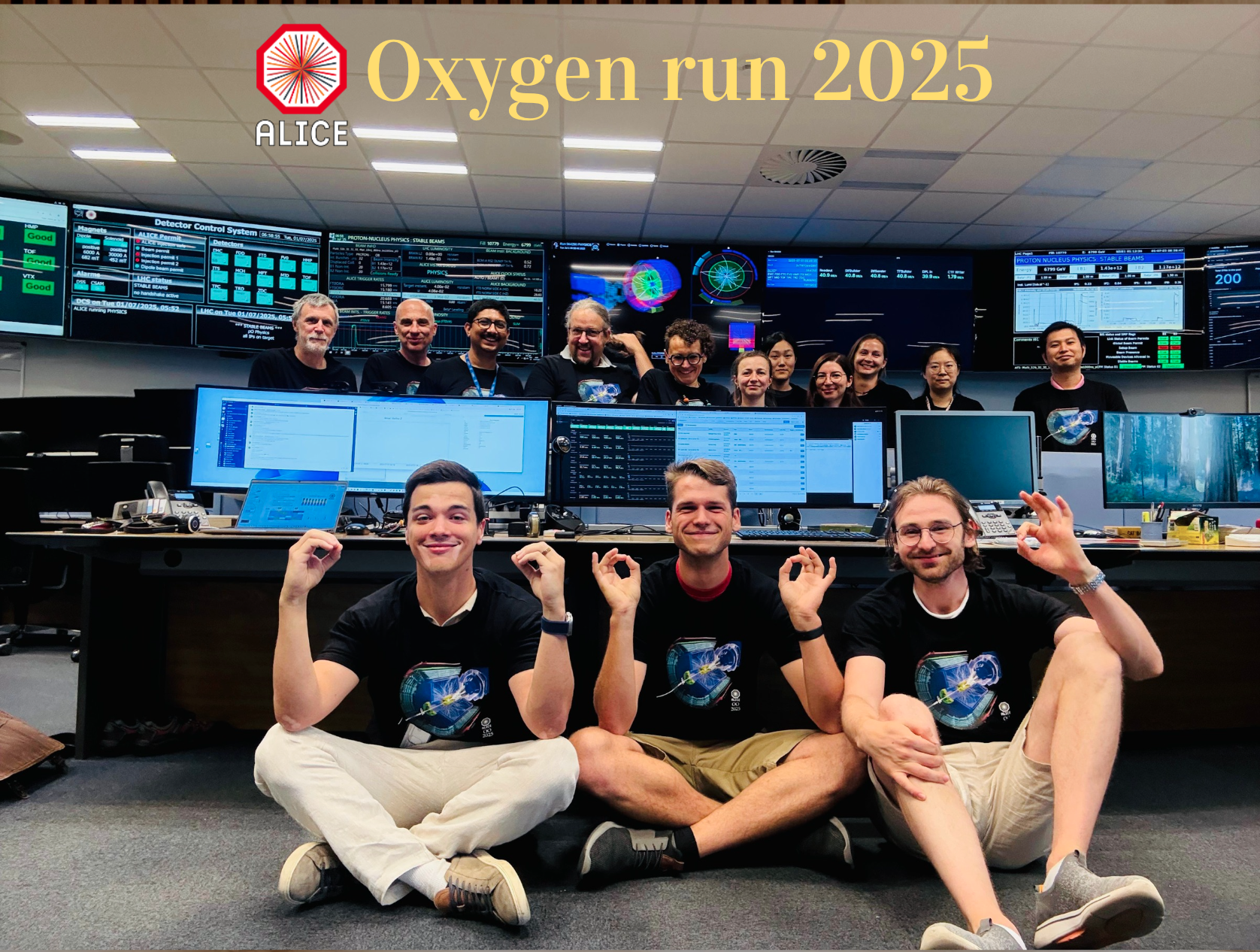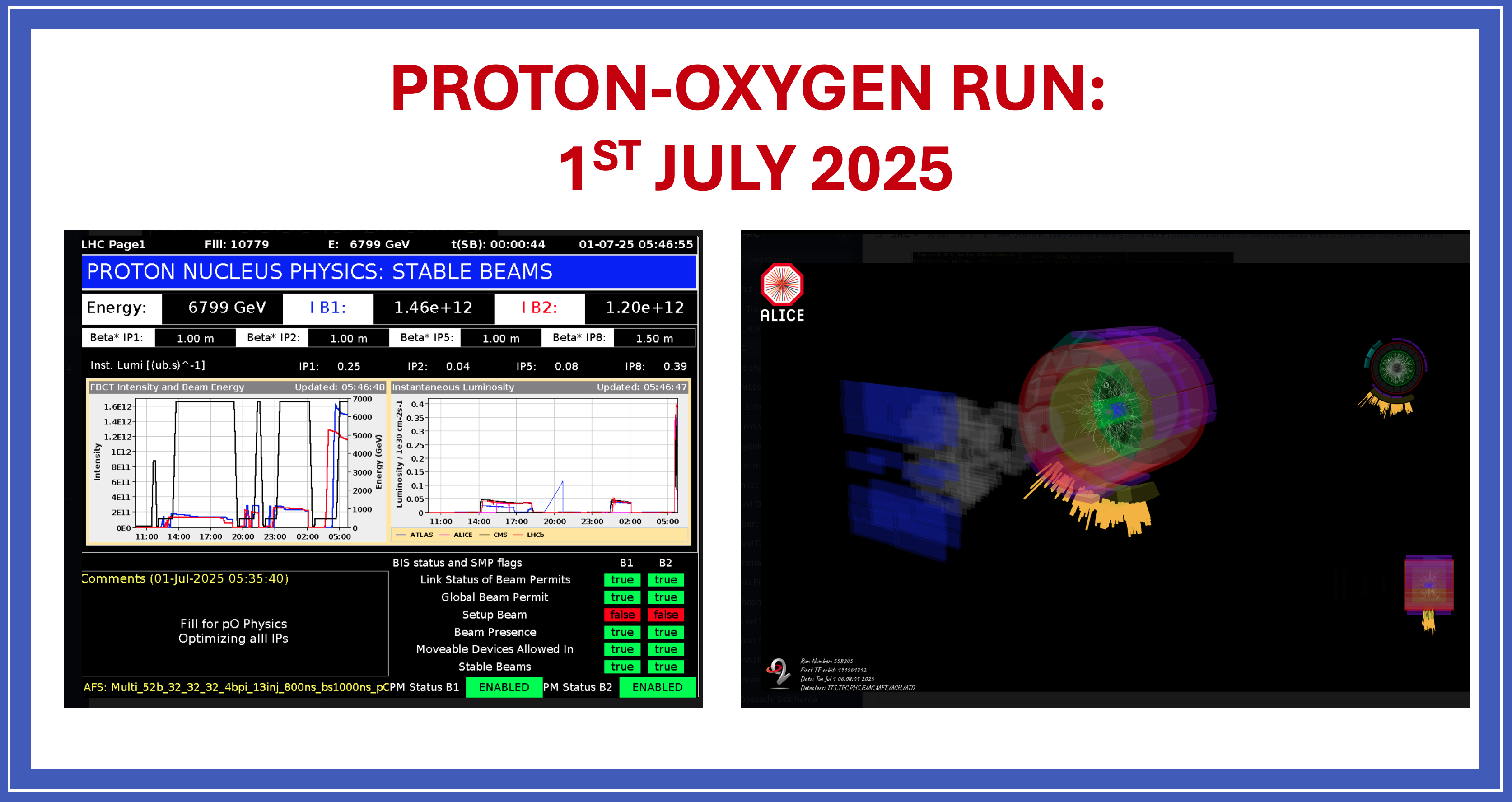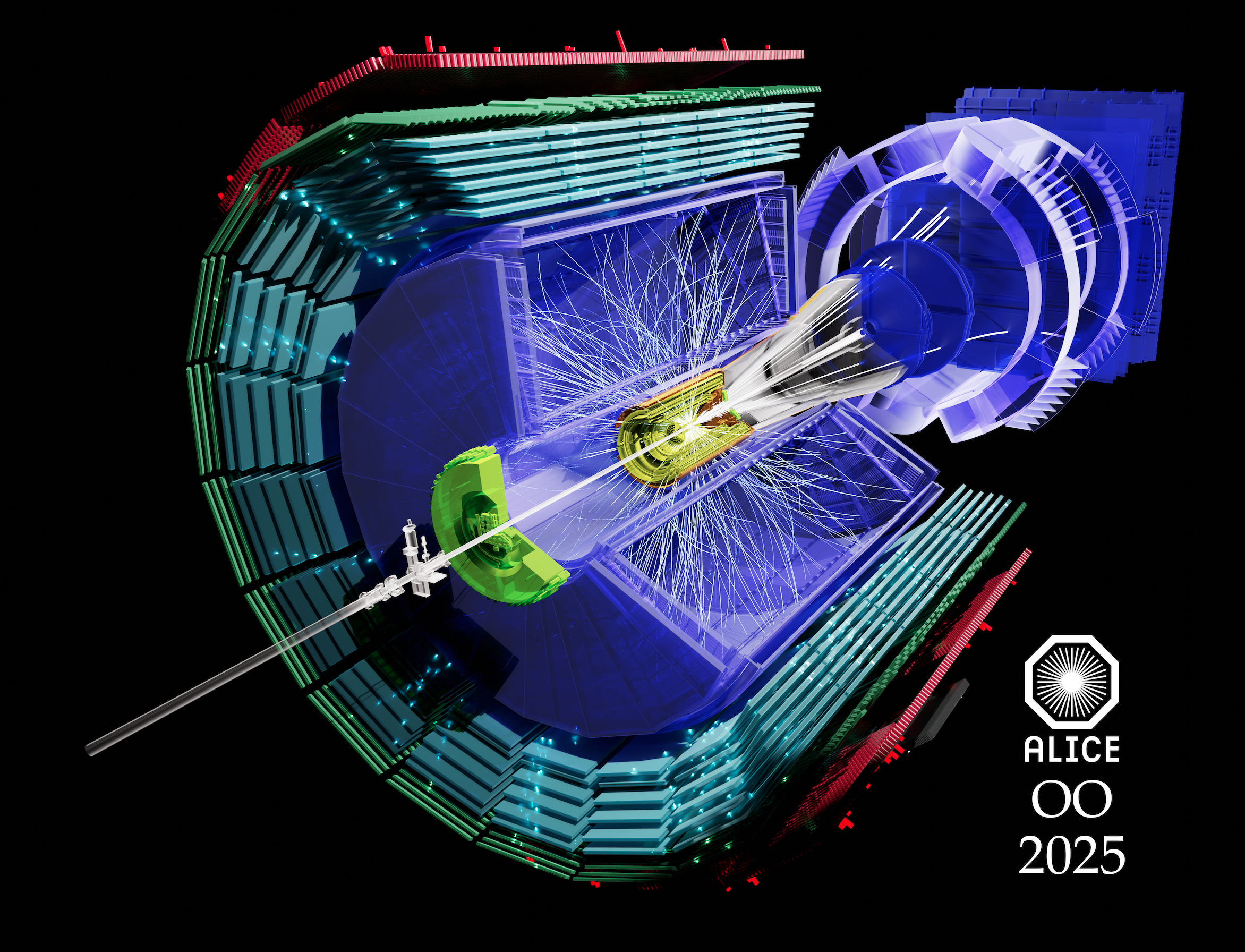
1st July 2025: proton-Oxygen Run

Oxygen collisions at the LHC: Collapsing the nuclear wave function
The Large Hadron Collider mainly collides protons, but once a year, it switches to colliding heavy ions, such as lead nuclei – a key ingredient for understanding the quark-gluon plasma (QGP), the primordial soup. The 2025 physics campaign at the LHC began in May with proton collisions at 13.6 TeV. But in early July, something new is happening: instead of protons, the LHC will collide oxygen ions - only for a few days. Bridging the gap between proton-proton and lead ions, collisions of oxygen ions provide a control system to study QGP formation in small systems.
Early on in the LHC program, it was found that proton-proton collisions with a large multiplicity of charged particles show long-range correlations, which are characteristic of elliptic flow in heavy-ion collisions. In addition, the relative production rate of multi-strange baryons was found to be enhanced in such collisions. Both observations indicate that a dense system, possibly containing a QGP, is formed in these collisions. However, one of the signatures of QGP formation has not been observed in pp collisions: quenching or suppression of high-energy particles and jets, possibly because the collision system is too small to induce measurable effects. One of the key goals of the OO run is to investigate whether jet quenching is visible in collisions of small nuclei.

Fig. Overlap density for a selection of O-O collisions calculated with the TRENTO (Phys. Rev. C 92 (2015) 011901) and NLEFT (Phys. Rev. Lett. 119 (2017) 222505) models.
Detailed measurements of azimuthal anisotropy will also allow us to determine the nuclear wave function, or the density distribution of protons and neutrons inside the Oxygen nucleus. The contemporary view is that the nuclear wavefunction of the Oxygen-16 nucleus is a quantum superposition of states, some of which may exhibit alpha clustering. A well-known example of such clustering is the Hoyle state, which is crucial for the production of Carbon-12 in stars.
Collisions of oxygen-oxgyen at the LHC occur over short enough time scales that they can collapse the nuclear wave function, and reveal each of the states on an event-by-event basis. The impact of clustering on the shape of the Oxygen-16 nucleus can be studied by measurements of anisotropic flow. The high density in the collision produces a liquid-like QGP state, which converts the density distribution of nuclear matter in space to momentum distributions in the final state. By comparing the measurements to model calculations, the contributions of different wave functions to the total wave function of the Oxygen nucleus can be determined.
Clustering can also be studied using the ALICE zero-degree calorimeters (ZDCs), which measure the protons and neutrons that do not participate in the collision and emerge at very small angles with respect to the beamline, the so-called spectators. A significant degree of clustering is predicted to lead to an increase in the number of spectators seen in the ZDCs.

The ALICE Collaboration is looking forward to the oxygen run at the LHC. It will provide opportunities to investigate the structure of the oxygen nucleus and gain a deeper understanding of QGP formation in small systems. In addition to the oxygen-oxygen run, proton–oxygen collisions are necessary for these studies and for improving the modelling of cosmic ray interactions in the atmosphere.
